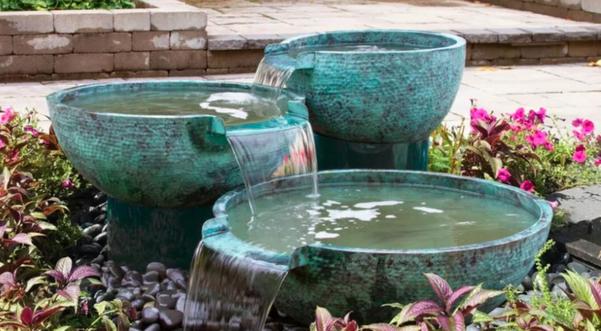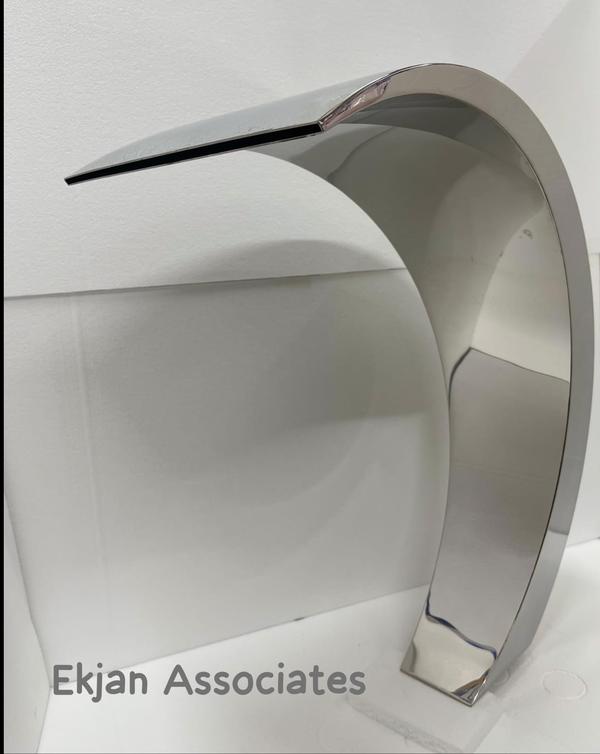
Timeless Elegance: How Carved Stone Planters Transform Modern Architectural Spaces
In the world of contemporary design, where clean lines and minimalist aesthetics often dominate, there's something profoundly captivating about incorporating elements that speak to our deeper cultural heritage. Carved stone planters, with their intricate motifs and weathered patina, represent a perfect marriage between ancient craftsmanship and modern spatial design—creating focal points that are both functionally practical and aesthetically transformative.
The Art of Sculptural Landscaping
The carved stone planters in this image exemplify how functional garden elements can transcend their utilitarian purpose to become true works of art. These cream-colored vessels, with their elaborate relief carvings featuring flowing vine patterns and decorative borders, demonstrate the timeless appeal of traditional stone carving techniques. Each planter tells a story through its surface, where skilled artisans have transformed raw stone into intricate narratives of botanical beauty.
What makes these pieces particularly striking is their ability to serve as sculptural anchors in outdoor spaces. Unlike mass-produced ceramic or plastic containers, carved stone planters possess an inherent gravitas that commands attention and respect. They don't merely hold plants; they elevate the entire garden composition, creating visual weight and establishing a sense of permanence that speaks to the enduring nature of quality craftsmanship.
Bridging Traditional and Contemporary Design
Modern architecture often emphasizes simplicity, geometric forms, and clean surfaces. While this aesthetic has its merits, it can sometimes feel sterile or disconnected from human warmth and cultural continuity. Carved stone planters provide the perfect antidote to this potential coldness by introducing organic curves, textural richness, and historical depth into contemporary settings.
The planters shown here demonstrate this principle beautifully. Set against the backdrop of modern decking, contemporary furniture, and sleek architectural lines, they create a compelling dialogue between past and present. The warm wood tones of the deck complement the earthy stone, while the woven baskets echo the organic, handcrafted quality of the carved vessels. This layering of textures and time periods creates visual depth that transforms a simple outdoor area into a sophisticated, multi-dimensional living space.
Creating Focal Points and Visual Hierarchy
One of the greatest challenges in landscape and architectural design is creating spaces that feel both cohesive and dynamic. Carved stone planters excel at establishing visual hierarchy, drawing the eye and creating natural gathering points that organize the flow of a space. In this image, the three planters of varying sizes create a pleasing asymmetrical composition that feels both intentional and organic.
The varying heights and proportions of these vessels demonstrate how thoughtful placement can create rhythm and movement within a static environment. The largest planter serves as the primary focal point, while the two smaller ones provide supporting visual notes that complete the composition. This arrangement principle can be applied to spaces of any size, from intimate courtyards to expansive public plazas.
Enhancing Architectural Character Through Contrast
Modern spaces often benefit from the introduction of contrasting elements that add personality and prevent visual monotony. Carved stone planters provide multiple layers of contrast that enliven contemporary environments. The rough, hand-hewn texture of stone contrasts beautifully with smooth glass, polished concrete, or steel surfaces commonly found in modern architecture.
The organic, flowing patterns carved into these vessels provide a counterpoint to the geometric precision of contemporary building materials. This juxtaposition creates visual tension that keeps spaces interesting and prevents them from feeling overly clinical or impersonal. The patina and weathering visible on these planters add another layer of contrast—the marks of time and natural aging that speak to authenticity in an age of mass production.
Sustainable Beauty and Long-term Value
In our current era of environmental consciousness and sustainable design, carved stone planters represent an investment in both beauty and environmental responsibility. Unlike synthetic alternatives that may degrade, fade, or become brittle over time, quality stone vessels actually improve with age, developing character and patina that enhance their visual appeal.
These planters embody the principle of "buy once, enjoy forever" that sustainable design advocates promote. Their durability means they won't need replacement for decades, possibly centuries, making them an economically sound choice over the long term. Moreover, their timeless aesthetic ensures they won't fall victim to changing design trends, maintaining their relevance and beauty across different decorating phases and ownership changes.
Versatility Across Design Styles
While these planters clearly draw from traditional carving techniques, their versatility allows them to complement a surprisingly wide range of design styles. In Mediterranean or Tuscan-inspired spaces, they feel naturally at home. In modern minimalist settings, they provide necessary warmth and texture. In eclectic or bohemian environments, they contribute to the layered, collected-over-time aesthetic that such styles celebrate.
The neutral color palette of these stone vessels makes them particularly adaptable. Their cream and beige tones serve as an excellent backdrop for plantings while harmonizing with most architectural color schemes. Whether surrounded by lush tropical foliage, structured formal plantings, or dramatic sculptural plants, these containers enhance rather than compete with their botanical contents.
Conclusion: Investing in Timeless Design
Carved stone planters represent more than just garden accessories—they're investments in creating spaces with soul, character, and lasting beauty. In a world increasingly dominated by mass-produced, disposable design elements, these handcrafted vessels offer a connection to traditional craftsmanship and enduring aesthetic values.
For architects, landscape designers, and homeowners seeking to create outdoor spaces with genuine character and architectural significance, carved stone planters provide an opportunity to introduce elements that will continue to enhance and define spaces for generations to come. They remind us that true luxury lies not in expense or ostentation, but in quality, craftsmanship, and the kind of timeless beauty that only improves with age.




